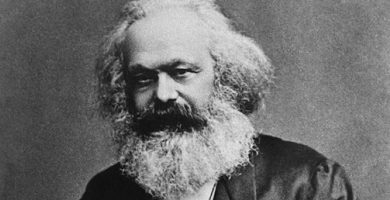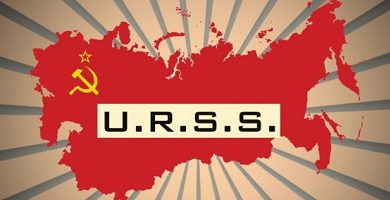What are rhetorical figures?
We explain what rhetorical figures are and what these uses of language are for. In addition, the types that exist and some examples.
-
What are rhetorical figures?
It is known as rhetorical figures or literary figures to certain uses of verbal language that move away from the effective communicative way, that is, the way we communicate a concrete idea, and pursue more expressive, elaborate, artistic, fun or powerful ways of transmitting The same idea.
They should not be confused with tropes or figurative, imaginative or comparative uses of language , as occurs in metaphors. The rhetorical figures employ the ordinary meanings of words , but order them in such a way that their meanings are enhanced or their inner beauty is enhanced.
Rhetorical figures are extremely common and evident in literary language, that is, in the writing of works of art of language ( Literature ), but it is also possible to use them in everyday speech , printing a seal of originality to the communication, a true style.
-
Types of rhetorical figures

Two types of literary figures are known: diction figures and thought figures.
Diction figures . They are those that affect the form of words, which often also affects their meaning. They are also classified into four types:
Figures transformation . Known as metaplasms, they consist of using words in a way that would commonly be incorrect, without changing their meaning. The best known are:
- Prosthesis : It consists of adding a phoneme at the beginning of the word.
- Epéntesis : Addition of a phoneme inside the word.
- Apocope : One or more sounds are lost at the end of the word.
Repeating figures . They occur when a sound already stated within the text is recovered : syllables, phonemes, etc. Some may be:
- Anaphora : It consists of the repetition of one or several words from the beginning of a verse or sentence.
- Polysyndeton : It consists in the use of many more conjunctions than those considered normal in a sentence.
Figures of omission . Elements of the sentence or phrase are removed , making it lighter. Such as:
- Asyndeton . Conjunctions or links in an enumeration are omitted.
- Ellipsis . Parts of the sentence that can be understood by context are removed.
- Paralipsis . Some of the text is omitted, but the reader’s attention is drawn to the omitted.
Position figures . They consist of the alteration of the normal order of the elements of the sentence. Some of them are:
- Hyperbaton : The syntax of the sentence is altered to influence your metric or draw attention to something.
- Anastrophe : The usual syntactic place of two elements of the sentence is exchanged.
Thinking figures . Those that concern more than anything the meaning of words. They can be of the following types:
Figures amplification . They consist of lengthening the contents of a text. Some cases are:
- Expolitio : An idea is said and then developed more extensively.
- Paraphrase : The same idea is said with other (own) words.
Accumulation figures . They pursue the addition of elements that complement what has already been said. Some cases are:
- Enumeration : Multiple examples of an idea already given are given.
- Epiphrasis : A series of descriptors that complement it is added to a main idea.
Logical figures . Those that are linked to the logical or meaningful relationship between the ideas presented, thus generating contrasts, oppositions, etc. Some cases are:
- Oxymoron : Two contradictory adjectives are used together .
- Antithesis : Two irreconcilable terms are opposed to lay the foundations of an idea.
Figures definition . Known as description, they reflect in the language the properties of the referred. Some cases are:
- Etopeya : An individual or character is described based on their moral traits.
- Chronography : It consists of the description of times or temporary events.
Oblique figures . Close to the tropes, they approach reality indirectly. Such as:
- Periphrasis or circumlocution : More words are used than necessary to describe an issue.
- Bits or attenuation : It consists in affirming a trait attenuating or denying its opposite.
Dialogical or pathetic figures . Those that appeal to the emotionality of the recipient, such as:
- Exclamation or ecphonology : Words that predispose the receiver to an admiring emotion (Oh! Etc.) are used.
- Rhetorical question: Those questions that do not seek to be answered, but to express an idea.
Dialectic figures . Of an argumentative nature, they seek to convince the receiver of something. Such as:
- Dubitatio or aporesis : it is expressed doubt about the possibilities other than what was stated.
- Correction : It consists of adding a correction with respect to what was previously said, building an antonymy relationship.
Fiction figures . They present as real imaginary events. Two of them are:
- Personification : Human traits are attributed to animals or inanimate objects.
- Idolopeya : Something said is attributed to an already deceased person.
-
Examples of rhetorical figure
Some examples of rhetorical figures are:
- Cats are extremely clean. Not to mention independent. (paralipsis)
- “I arrived , I saw , I won” (asyndeton)
- The soldiers arrived. The soldiers were there. ( anaphora )
- ¿ Pa , lend me your bike to go to the cole ? (apocope)
- The bars walking walked the poet (hyperbaton)
- There was a dark sun , whose gloomy light … (oxymoron)
- For you I feel a good, beautiful, pure, immense, impossible love (epiphrasis)
- With no little patience I am here (attenuation)




